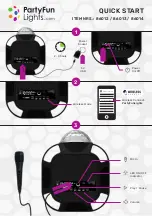
OUTPUT PROBLEMS
Observe Safety Guidelines detailed in the beginning of this manual.
PROBLEMS
(SYMPTOMS)
POSSIBLE AREAS OF
MISADJUSTMENT(S)
RECOMMENDED
COURSE OF ACTION
If for any reason you do not understand the test procedures or are unable to perform the tests/repairs safely,
contact the Lincoln Electric Service Department for technical troubleshooting assistance before you proceed.
Call 1-888-935-3877.
CAUTION
Engine will not idle down. Weld
and auxiliary outputs are normal.
1. Check that the engine switch is
in the “Auto” position.
2. Check that the engine choke is
fully open.
3. There may be a load on the
weld or auxiliary output.
Disconnect all cables and cords.
1. The idle solenoid may be
improperly adjusted. Perform
the
Engine RPM adjustment
procedure
.
2. With the engine running, place
the engine switch in the “Auto”
position. Check for battery
voltage at the idle solenoid,
lead 213B. if battery voltage is
not present, check engine
switch, connector P4/J4, and
leads 213A and 213B.
3. If battery voltage was detected
in step #2 above, check
connector P4/J4, leads 215
and 215A.
4. Check for AC voltage at leads
260 (J2-3) and 261 (J2-4).
With no load on either the weld
or auxiliary output, the meter
should read about 26 mV. If
the voltage is significantly
higher than this, the toroidal
current transformer may be
faulty, or improperly wired.
This may also indicate a load
on machine input or faulty
internal components drawing
current.
5. If the above readings are
normal, replace the PC board.
TROUBLESHOOTING AND REPAIR
F-7
F-7
OUTBACK® 185
Return
to
Section
T
OC
Return
to
Section
T
OC
Return
to
Section
T
OC
Return
to
Section
T
OC
Return
to
Master
T
OC
Return
to
Master
T
OC
Return
to
Master
T
OC
Return
to
Master
T
OC
Engine idles own but will not stay
at low idle.
Low idle ROM may be set too low.
Perform the
engine RPM
adjustment procedure
.
















































